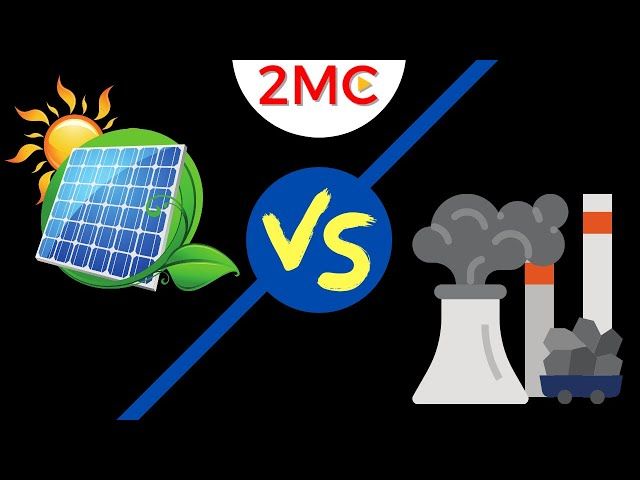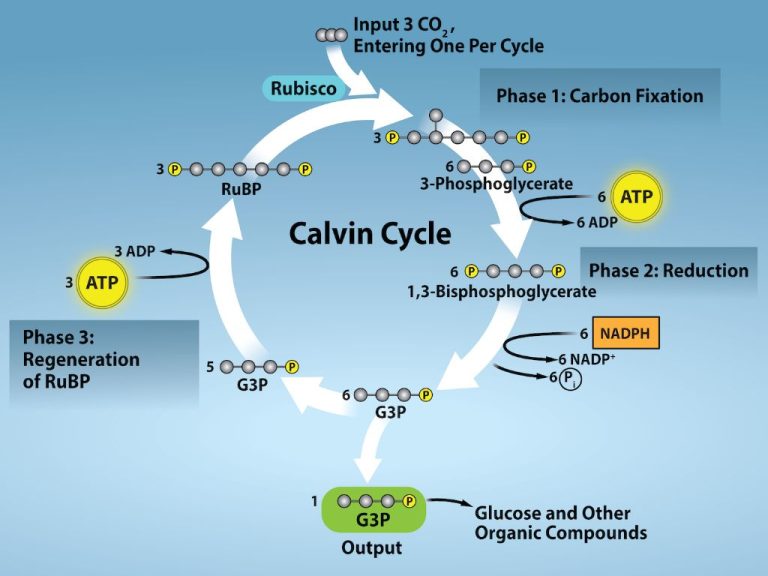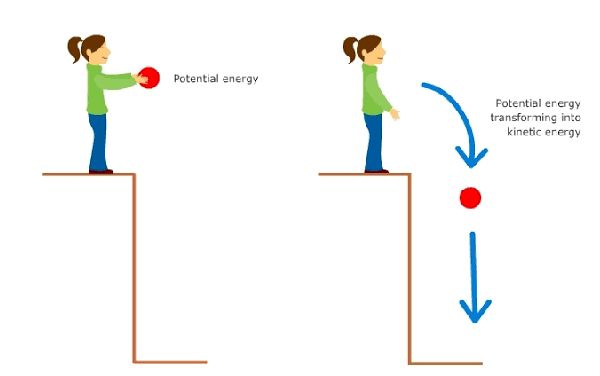What Are Some Examples Of Current Electricity?
Electric current is the flow of electric charge carriers such as electrons through a conductor. It’s a fundamental form of energy that powers many devices and appliances in our daily lives. Current electricity involves moving electrons that can do work and provide energy.
Electric current is generated when there is a voltage difference between two points in space, which causes electrons to flow from a region of high voltage to low voltage. The flow of these charged electrons constitutes an electric current. Devices like batteries and generators maintain a voltage difference and thus power an electric current continuously.
Batteries
Batteries are a common everyday source of current electricity. They produce electricity through electrochemical reactions between chemicals inside the battery.
Specifically, batteries contain two electrodes – a positive cathode and negative anode – that are separated by an electrolyte solution. The electrodes are made of different chemicals, like zinc and manganese oxide. The electrolyte allows ions to flow between the electrodes while keeping them physically separated.
When a device is connected to the battery, chemical reactions occur. At the anode, the metal gives up electrons, becoming positively charged metal ions. The freed electrons then flow through the device as electric current. At the cathode, the positive ions receive electrons and are reduced back into metal atoms. This process continues as long as there is a difference in electric potential energy between the electrodes.
So in essence, the stored chemical energy in a battery is transformed into electrical energy and current flow due to the battery’s internal reactions. This makes batteries a portable and convenient source of electricity for powering many devices.
Power Plants
Power plants generate most of the electricity used in modern society. They convert energy from sources like coal, natural gas, nuclear fuel, moving water, and the sun into electricity through generators.
Generators work by using magnetic fields to produce alternating current (AC) or direct current (DC). In AC generators, the magnetic field rotates rapidly inside coils of wire. This induces an alternating electrical current in the coils with constantly changing direction. AC electricity can travel long distances efficiently and is used to power homes and businesses.
DC generators have a stationary magnetic field and rotating coils of wire. This produces a unidirectional current that flows in only one direction. While DC current cannot travel as far, it allows smooth speed control of motors. Large power plants may have both AC and DC generators.
Fossil fuel plants burn coal, oil or natural gas to boil water into steam that spins turbines connected to electrical generators. Hydroelectric dams use the energy of flowing or falling water to turn turbines. Nuclear plants use the heat from nuclear fission to convert water to steam. Solar photovoltaic panels convert sunlight directly into electricity.
Solar Panels
Solar panels are one of the most common examples of generating current electricity from sunlight through the photovoltaic effect. The photovoltaic effect refers to the creation of a voltage or electric current in a material upon exposure to sunlight. When sunlight hits the solar cells in a solar panel, the energy from the photons in the sunlight gets absorbed by the semiconducting material, causing electrons to break free and flow. This generates a DC current that travels through the solar cells. The solar cells are wired together in a solar panel to boost the voltage and output power. The current electricity generated can then be fed into an inverter to convert it into AC electricity usable for powering homes, businesses, and the grid.
Solar power generation through photovoltaic panels has become a major renewable energy source worldwide. With solar panel installations expanding exponentially, an increasing share of buildings now have solar panels on the rooftops or in solar farms to generate emissions-free electricity. The modular nature of solar panels allows incremental capacity expansion. With solar PV prices declining sharply over the years thanks to technological improvements, solar electricity in many parts of the world is already at grid parity and competes with fossil fuels in terms of pricing.
Piezoelectricity
Piezoelectricity is the phenomenon where certain materials can generate an electrical current when mechanical stress is applied. The effect works in reverse as well, where an applied electrical signal can generate a mechanical deformation in the crystal. This effect is exhibited in certain crystalline materials, such as quartz, Rochelle salt, and some ceramics like barium titanate or lead zirconate titanate (PZT).
The word “piezoelectricity” comes from the Greek word “piezein,” which means “to press.” It refers to the ability of these materials to generate electricity from pressure. Piezoelectricity results from the linear electromechanical interaction between the mechanical and electrical states in crystalline materials that have no inversion symmetry. The internal generation of electrical charge due to an applied mechanical force is called the piezoelectric effect.
When a piezoelectric material is subjected to pressure or vibrations, the atomic structure compresses, causing polarization of molecules and displacement of the positive and negative charge centers. This separation of charge creates an electrical potential or voltage across the material. Connecting electrodes to the crystal allows current to flow when the material is mechanically stressed. This current can be used to power other devices or processed through additional circuitry.
Piezoelectricity is useful for a variety of sensing and actuation applications. It enables the interconversion of mechanical and electrical forms of energy. Piezoelectric materials are used to build sensors, actuators, frequency standards, motors, and even everyday devices like lighters and push-start propane barbecues. This phenomenon allows energy harvesting from mechanical vibrations and has many applications for renewable energy generation.
Thermoelectric Effect
The thermoelectric effect refers to the direct conversion of temperature differences into electricity. It occurs when there is a temperature gradient present in a conductive material or between two different conducting materials.
Materials that exhibit the thermoelectric effect have the ability to generate an electrical voltage or current when one side of the material is a different temperature than the other. This happens because when one side of the thermoelectric material is heated, the electrons on that side gain energy and move faster, causing more electrons to accumulate on the cooler side and creating a voltage difference.
The magnitude of the voltage produced is proportional to the temperature difference between the two sides. The greater the temperature gradient, the higher the voltage generated. Even small temperature differences on the order of 1°C or less can produce a measurable amount of electricity via the thermoelectric effect.
Thermoelectric generators can harness this phenomenon to convert heat into electrical power. They have no moving parts and are compact, silent, and scalable. NASA uses radioisotope thermoelectric generators to power spacecraft and rovers. The Seebeck effect, Peltier effect, and Thomson effect are different manifestations of the thermoelectric effect in action.
Triboelectric Effect
The triboelectric effect is one example of how current electricity can be produced through the friction between two different materials. When certain materials are rubbed against each other, they can become electrically charged as electrons are exchanged between them. The material that gains electrons becomes negatively charged, while the material that loses electrons becomes positively charged.
The amount of charge generated depends on the materials used. For example, rubbing glass with silk results in the silk gaining a negative charge and the glass gaining a positive charge. The silk has a greater affinity for electrons than the glass. Other material pairings like rubber and fur will produce larger amounts of static electricity through friction.
The buildup of charges produces an electrical potential difference between the two materials. If they are then connected by a conductor like a metal wire, electrons will flow to balance the charges. This flow of electrons is an electric current that can be captured and put to use.
One application of the triboelectric effect is in triboelectric nanogenerators. These devices convert mechanical energy like vibrations and motion into electricity through contact electrification between two materials. For example, arrays of vertical zinc oxide nanowires and electrodes can generate current when flexed. The triboelectric effect provides a simple and effective means of harnessing the abundance of mechanical energy in our everyday environments to produce current electricity.
Electrochemical Cells
Electrochemical cells are a common source of current electricity that rely on oxidation-reduction reactions. In an electrochemical cell, chemical energy is converted into electrical energy through spontaneous redox reactions. These reactions involve the transfer of electrons from a reducing agent (the reductant) to an oxidizing agent (the oxidant). This electron transfer generates an electric current that can be harnessed.
A simple electrochemical cell consists of two half-cells – one contains the oxidant and the other contains the reductant. The half-cells are connected by an external circuit that allows for the flow of electrons. As the redox reaction occurs, electrons flow from the reductant to the oxidant through the external circuit, generating an electric current. The movement of electrons from one half-cell to the other constitutes the current produced by the electrochemical cell.
Some common examples of electrochemical cells are batteries and fuel cells. In batteries, the anode (negative terminal) contains the reducing agent while the cathode (positive terminal) contains the oxidizing agent. As the battery is used, the redox reaction takes place, generating a flow of electrons from anode to cathode and producing an electric current. Fuel cells also rely on redox reactions, often involving hydrogen and oxygen, to produce electricity. Overall, electrochemical cells allow us to harness chemical energy and convert it into usable electrical energy through oxidation-reduction reactions.
Electromagnetic Induction
Electromagnetic induction is one of the most common examples of current electricity in modern technology. It involves generating electric current by exposing a conductor to a changing magnetic field. Faraday’s law of induction states that the induced electromotive force (emf) in a closed circuit is directly proportional to the rate of change of the magnetic flux through the circuit. In simpler terms, when the magnetic field through a conductor changes, it causes electrons in the conductor to move and generate a current.
Some common examples utilizing electromagnetic induction include electrical generators, transformers, and inductors. In an electrical generator, mechanical work is applied to rotate a magnet near a coil of wire. As the magnetic field changes around the coil, it induces a current which can then be drawn off and used. Transformers consist of two separate coils which do not touch. When alternating current flows through one coil (the primary), it creates a changing magnetic field which then induces a current in the secondary coil. Inductors are coils of wire designed to provide inductance which opposes changes in current by inducing voltages in the opposite direction. Overall, electromagnetic induction allows us to harness the power of changing magnetic fields for the practical generation of electricity.
Static Electricity
Static electricity is a common example of electric current caused by the transfer of electrons between objects. It occurs when electrons are transferred between two objects, causing one object to become positively charged and the other to become negatively charged. This transfer of electrons creates a potential difference, or voltage, which allows electric current to flow briefly when the objects are brought close together or touched.
Some everyday examples of static electricity include:
- Rubbing a balloon on your hair, causing the balloon to stick to the wall
- Removing clothing from the dryer and feeling a shock when you touch a metal door handle
- Getting a shock from touching a doorknob after walking across a carpet
In each case, electrons are transferred from one object to another (e.g. hair to balloon, clothes to doorknob), resulting in a buildup of opposite charges. The current flows when the charges equalize again, giving you a shock. The electron transfer between objects is what creates the electric current, albeit temporary, in static electricity.




